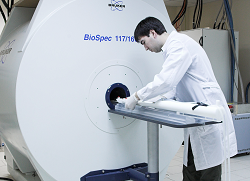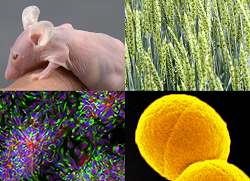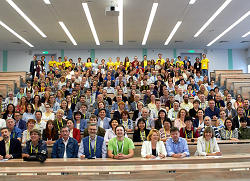Лекция проф. В.С. Тарабыкина «Molecular control of cell fate and axon navigation in the developing neocortex» 19 мая 2015 года, ИЦиГ
Во вторник, 19 мая, в 17:00 в конференц-зале Института состоится лекция ВИКТОРА СТЕПАНОВИЧА ТАРАБЫКИНА, профессора клеточной нейробиологии, директора Института клеточной биологии и нейробиологии, Берлин, Германия
Название лекции: «Molecular control of cell fate and axon navigation in the developing neocortex»
Приглашаем всех желающих!
Явка аспирантов и студентов обязательна!
Ниже прилагаются тезисы лекции и публикации лектора по теме выступления.
The cerebral cortex or the neocortex is the crowning achievement of mammalian evolution. It forms the biological substrate of our higher cognitive capacity that include language, problem solving, reasoning, decision making etc., abilities that distinguish humans from other less-evolved species. As a first step in understanding these processes and how the brain computes seemingly complex tasks with tremendous ease, one must first understand the organ responsible for controlling these tasks. During development the neocortex arises from a relatively small population of precursors or progenitors residing in the ventricular and subventricular zones in the dorsal telencephalon. These progenitores generate a large variety of different neurons. These neurons acquire distinct morphologies, specific connections and physiological properties and serve distinct functions in the mammalian cerebral cortex. We are interested in the cellular and molecular mechanisms underlying cell fate specification in the mouse cerebral cortex. We focus on the mechanisms controlling the generation, migration and axonal guidance of neurons of different cortical layers and areas. I will discuss the roles of transcription factors Satb2, Ctip2, Sip1 and downstream mechanisms in the cortical development.
5 selected publications
1. Srivatsa S., Parthasarathy S, Molnar Z., Tarabykin V. Sip1 downstream effector ninein controls neocortical axonal growth, ipsilateral branching and microtubule stability. Neuron, 2015 Mar 4;85(5):998-1012
2. Srivatsa S, Parthasarathy S, Britanova O, Bormuth I, Donahoo AL, Ackerman SL, Richards LJ, Tarabykin V Unc5C and DCC act downstream of Ctip2 and Satb2 and contribute to corpus callosum formation. Nature Commun. 2014 Apr 17;5:3708. doi: 10.1038/ncomms4708.
3. Seuntjens E, Nityanandam A, Miqualajauregui A, Debruyn J, Stryjewska A, Goebbels S, Nave K, Huylebroeck D., Tarabykin V. Sip1 regulates sequential fate decisions by feedback signaling from postmitotic neurons to progenitors. (2009) Nature Neuroscience 12(11):1373-80
4. Britanova O, de Juan Romero C, Cheung A, Kwan KY, Schwark M, Gyorgy A, Vogel T, Akopov S, Mitkovski M, Agoston D, Sestan N, Molnár Z, Tarabykin V. Satb2 is a postmitotic determinant of upper layer neurons specification in the neocortex (2008) Neuron 57(3):378-92.
5. Miquelajauregui A., Van de Putte T., Polyakov A., Nityanandam A., Boppana S., Karabinos A., Higasi Y., Seuntjens E., Huylebroeck D., and Tarabykin V. Smad-interacting protein-1 (Sip1/Zfhx1b) acts upstream of Wnt signaling in the mouse hippocampus and controls its formation (2007) PNAS 104 (31) 12919-12924.



